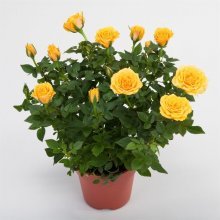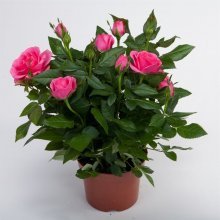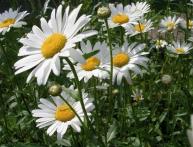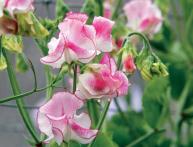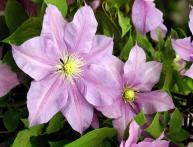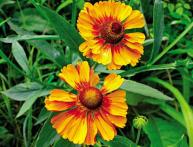Indoor decorative rose: care recommendations
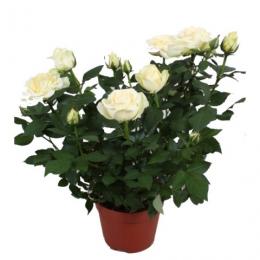
Many people dream of having an indoor rose. Such a flower always attracts attention, attracts with its aroma and beauty. In order for a decorative indoor rose to develop well, care must be correct. Many people believe that this requires a lot of effort, but if the necessary conditions are provided, this flower will delight you with its beauty.
Content:
- General recommendations
- Planting and transplanting
- Growing conditions
- Plant care
- Care during the rest period
General recommendations
There is more than one type of decorative roses, but they do not have much difference in care. Therefore, no matter what variety is chosen, general recommendations should be followed. Then rose will develop and bloom well. But what kind of care should be given so that such a plant can take root in apartment conditions? This doesn't require much effort. It is enough to water the plant in a timely manner, replant it, and feed it.
Experienced experts advise placing roses on south or south-east windows. During the warm season, it is not forbidden to take the flower out into the fresh air; moreover, this will only bring benefits. The right soil should be selected for the rose; it should be nutritious. This is a demanding plant, but do not be afraid, as it is easy to satisfy all its whims.
Planting and transplanting
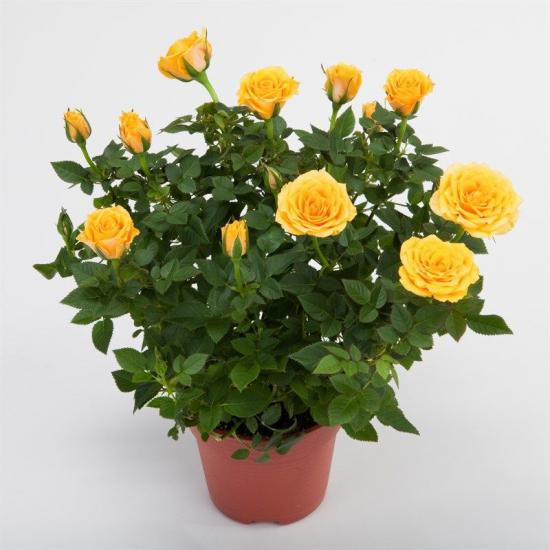
Plant and transplant Experts recommend roses for the waxing moon. There is an opinion that in this case it will develop better and bloom well. If the rose was recently purchased, then there is no need to rush into replanting. The plant must adapt over the course of several weeks. Special stores sell soil intended for roses. It is recommended to purchase it, as it is quite nutritious, which this plant especially needs. When a rose is transplanted, do not forget about drainage. It should consist of a centimeter layer. There is usually a drain hole in the pot. But if it is not there, then the drainage should be increased to several centimeters. During transplantation, you should not remove the entire earthen ball; part of it, the old soil, is removed. This procedure should be carried out carefully so that the rhizome remains unharmed.
For replanting, select a pot that is slightly larger than the old container where the plant developed. Ceramic dishes are ideal. To begin with, the pot should be soaked in warm water for several hours if it is new. Before the beginning transplants It is necessary to water the rose well, the water should be absorbed. After this, the bush is carefully removed. When the plant is transplanted, it does not need to be watered, you can only spray the foliage. The pot should be placed in the shade. When 24 hours have passed, then you can put the rose in its original place. After a month, the plant needs feeding. Moreover, it is repeated every 14 days. This procedure is done more often when the buds begin to set.
Growing conditions
In order for the rose to develop well, the necessary growing conditions must be provided. This applies to:
- lighting
- soil
- temperature
- air humidity
Rose loves light, so it should be placed on windowsills that are well lit.But in summer, on the south side, the plant may die from the heat, so it is recommended to put it outside at this time. If this is not possible, then you should choose another place for the rose in the summer. In winter, the room where the rose is located should be cool, and in summer, moderate temperatures should be maintained. Often indoor roses in apartments suffer from overdrying or overheating. In winter, the plant may die from hypothermia of the rhizome. Therefore, you should protect the rose from drafts.
When the air in the room is very dry, then the leaves will begin to dry out, and pests will attack the rose. This plant needs sufficient air humidity. To do this, you should spray the rose every day. On the balcony or street, this procedure should be done less frequently.
Experts advise giving your rose a warm shower once a week. This will only bring benefits. The soil must allow air and moisture to pass through. After some time, you can loosen the soil. But this procedure requires caution, since root system The rose is delicate and can be easily damaged. A mixture of turf and humus soil, to which sand is added, is ideal for it.
Plant care
Decorative roses do not like waterlogged soil. It has a particularly negative effect on them in winter and spring, when growth slows down. When young buds begin to sprout, watering should be increased slightly. In the summer, the rose needs to be watered well; the moisture gradually decreases by autumn. Water for irrigation should stand for about 24 hours, only then can it be used. Do not water the rose with cold water.When the plant blooms, you should apply fertilizers intended for decorative flowers every week.
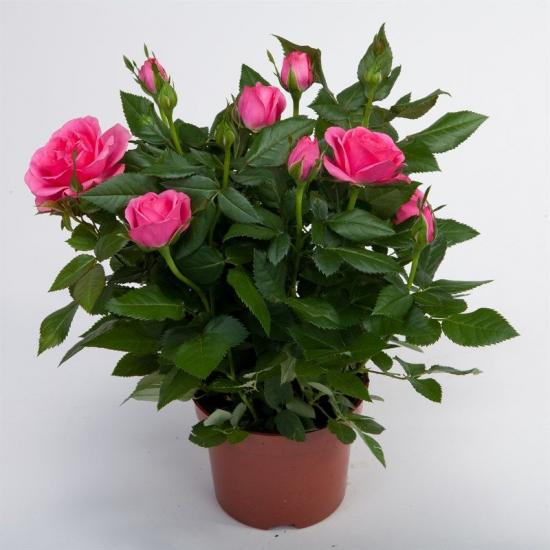
The rose can be attacked by pests. She often suffers from powdery mildew. It appears when the plant is crowded in one place. A white coating will appear on the foliage and stem, the leaves will slowly dry out and curl. If such a problem occurs, you need to treat the plant with special preparations. The rose is also attacked by spider mites. In this case, the foliage suffers from pale spots that begin to increase in size. To eliminate this problem, you should go to special stores that sell anti-tick products.
In rare cases, a rose suffers from aphids. It destroys not only foliage, but also buds. A sticky discharge appears on their surface. Thrips can affect a rose. In this case, the foliage becomes brown with a silver tint. When these pests the plant also needs help.
Care during the rest period
Any rose variety has a dormant period. It begins in mid-autumn and lasts until spring. During this period, the plant stops blooming and the foliage turns yellow. The rose should be placed in a cool room. An ideal temperature for the plant is about 8 degrees. This is the most important obstacle when growing ornamental roses indoors. Often apartments are well heated, so the plant will not be able to survive the dormant period on the windowsill. Therefore, the only option for a rose would be a glazed balcony.
This is where the plant is placed. If there are other cool places, then you should move the rose there. But the next problem comes - soil hypothermia.After all, it should be a little warmer than the air temperature. In this case, it is recommended to place the pot with the plant in a container with sawdust. In winter, the rose is not sprayed and rarely watered. If you care for it properly, then new buds will grow in March.
In autumn, old shoots should be pruned. There should be about 5 buds left on each branch; there is no need to remove the foliage. If you do not do this procedure, it will affect flowering. Room decorative The rose needs special care, as it is a capricious plant. But as a result, it will reward you with beautiful and fragrant flowers.
Video about proper pruning of decorative roses:
Interesting information about the vegetable garden

